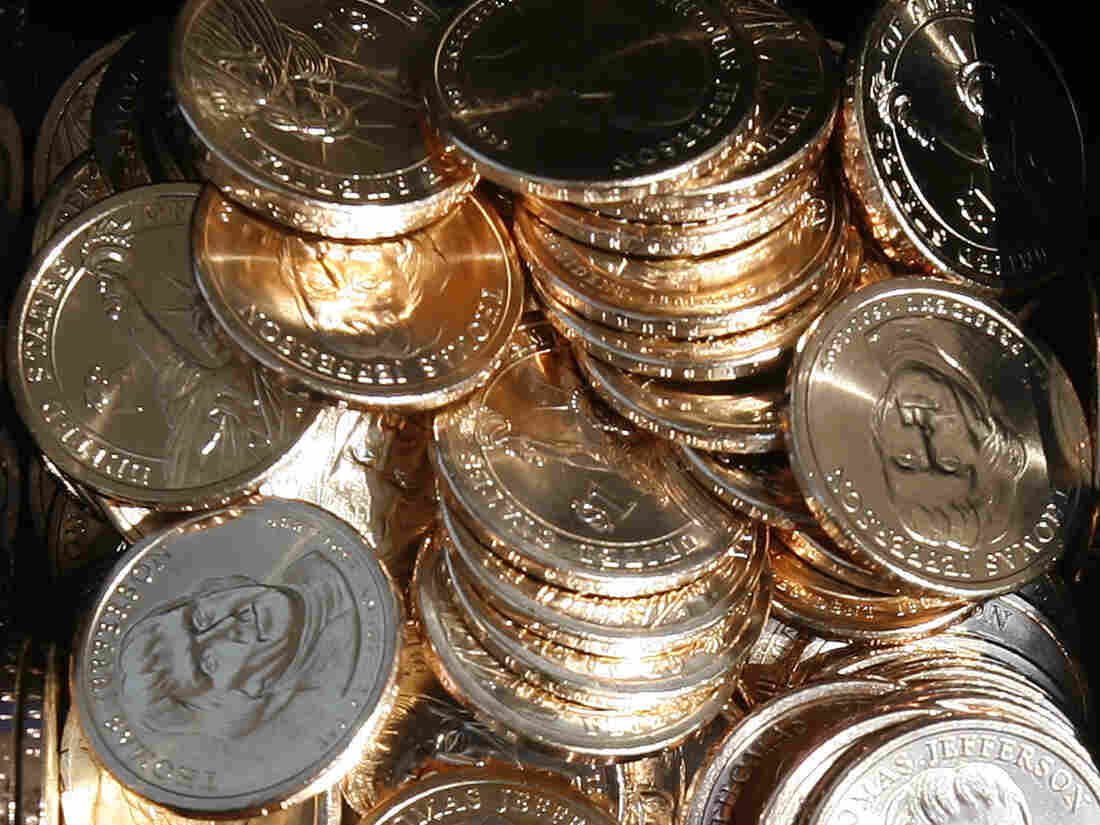
A pile of newly minted one-dollar coins honoring former Thomas Jefferson are seen at the unveiling by the U.S. Mint in Washington, D.C., in 2007. In a turnaround, congressional analysts are no longer recommending a phaseout of paper dollars in favor a dollar coin.
Jim Young/Reuters
hide caption
toggle caption
Jim Young/Reuters
Who says a dollar doesn’t go as far as it used to?
When it comes to dollar bills, a new report from the federal government says they’re lasting more than twice as long as they were at the beginning of the decade.
And that’s upending an old argument about replacing the dollar bill with a $1 coin.
Analysts have long argued the federal government could save money by making the switch because even though coins cost more to mint, they last much longer than paper money. In 2011, the Government Accountability Office estimated the savings at $5.5 billion over 30 years.
But a second look from the GAO flips that coin argument on its head. Analysts now say the government would lose between $611 million and $2.6 billion over 30 years by phasing out the dollar bill. The economics have shifted because dollar bills are lasting longer.
“When we last looked at this issue in 2011, the paper dollar was only lasting a little bit over three years,” said John Shumann, an assistant director at the GAO. “When we looked at this issue again this year, we found that the paper dollar is now lasting almost eight years long.”
Shumann said that’s partly because of changes in the way the Federal Reserve processes dollar bills. But it’s also a sign that in an increasingly cashless world, paper dollars aren’t getting around like they used to.
“They’re often showing less signs of wear and tear,” Shumann said.
As part of its research, the GAO surveyed lots of industries that might have a stake in the paper-versus-coin contest, and found most are not eagerly embracing the switch to $1 coins.
Even the Coin Laundry Association.
“You know, it’s right in our name,” said CEO Brian Wallace, whose group represents some 30,000 self-service laundries around the country.
Despite the name, only a handful of those businesses currently accept $1 coins. Meanwhile, alternative payment options have proliferated.
“You could still pay with a quarter,” Wallace said. “But you could also pay with a credit card or add value to a card. Or taking the Starbucks approach of just waving the phone at the washer and it starts.”
Other businesses long associated with coins have also moved on.
“Once upon a time, toll roads, along with transit systems and the post office itself were the largest coinage handlers in the country,” said Neil Gray, director of government affairs for the International Bridge, Tunnel and Turnpike Association.
Not anymore. Fewer than one in five toll-road users pay cash today.
“To the extent possible, we’ve had entire toll road systems eliminate cash completely,” Gray said.
Even slot machines have largely done away with coin slots.
(One exception is the gumball machine industry, which told the GAO it could offer higher-quality gum and toys if more people carried $1 coins.)
The new GAO report may discourage congressional efforts to phase out the dollar bill. In any case, $1 coins have proven stubbornly unpopular with the public. That’s why the Fed has more than a billion of the coins sitting unused, in storage.